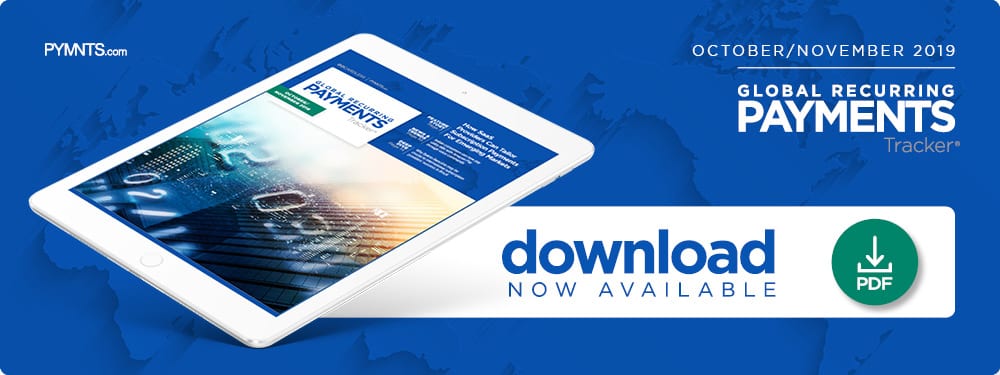Deep Dive: How Boleto Bancário Helps International Subscription Providers Reach Brazilians
Brazil’s potential customer base tempts global subscription service providers, as the South American country boasts a population of 200 million and had 132 million people with internet connections in 2018. Web-connected Brazilians spend a hefty amount of time online, averaging 26 hours per week, and they rank fourth place worldwide for mobile phone penetration.
Brazilian consumers are relatively accessible to global subscription companies, but online payment methods do not always reach them. More than 25 percent of Brazilians lack bank accounts, and only 20 percent carry credit cards that can be used for international purchases. Other consumers’ cards only transact in the domestic currency, requiring overseas businesses to find local partners to enable payment acceptance. Even consumers equipped with credit cards may not be willing to use them online – 40 percent of Brazilians report that fear of fraud stops them from sharing credit card information on the internet.
International merchants often find that serving this emerging market requires embracing a popular domestic payment instrument known as Boleto Bancário.
Attracting Customers With Boleto Bancário
Brazilian consumers particularly benefit from domestic options, as they evade a 6.38 percent tax on foreign merchant transactions by using local payment methods. For this and other reasons, many favor making payments via a Brazilian Federation of Banks-regulated domestic system called Boleto Bancário. Those who use this method receive invoice-like tickets – “boletos” – for transactions, and can either pay for tickets online or bring printouts to locations where they can use cash. Consumers can pay off boletos at approximately 64,000 spaces, including ATMs, bank branches, lottery agencies, post offices and supermarkets. Numerous Brazilians pay rent and utilities with the method and can readily adopt it for eCommerce. Customers choosing to pay boletos digitally can scan the tickets’ barcodes on their phones or type associated serial numbers into their apps to trigger pull payments from their accounts.
Approximately 15 percent of all payments in Brazil are made through Boleto Bancário, as were 21 percent of all 2017 Brazilian online purchases. Sellers handle recurring transactions by either providing customers with booklets containing printed boletos dated for each payment instance – such as one for each month of a magazine subscription – or by emailing digital boletos to customers for each due date.
Security-conscious Brazilians tend to use Boleto Bancário for high-value online payments to avoid handing out credit card numbers. Merchant advantages include no chargeback risks and access to the approximately 55 million Brazilian adults who lack bank accounts, as well as those who are wary of other methods.
The Challenges of Providing Boleto Bancário
Subscription providers offering Boleto Bancário may find some obstacles, however, as companies have to ensure that consumers follow through, and sellers may encounter aggravating waits for their payments to settle. Some providers assert that half of the boletos created online ultimately go unpaid, while other sources estimate that figure to be nearly a third. Sellers do not complete orders until receiving payment, minimizing the risk of fraud or loss of sellers’ property due to nonpayment. Businesses are charged registration fees for issuing boletos regardless of customer payment, which could drain revenue, and thus must vigilantly seek opportunities to improve payment completion. Sellers typically generate boletos with expiration dates of two to three days in an effort to minimize these issues, and they may send email prompts to pay.
Even timely customer payment does not ensure that international subscription companies see money quickly, as merchants must wait for confirmation of transaction completion, which typically takes several days. They must wait further for the money to arrive in their accounts. Payment providers seeking to alleviate some of this burden advertise digital services that facilitate customers’ payments and notify merchants within minutes of completion, enabling sellers to immediately start delivering purchased goods or services.
Businesses that find the boleto settlement periods to be painful may still be well-advised to provide this payment instrument, as firms that cater to local payment demands have a better chance of getting consumers to try their offerings. The sellers then have opportunities to prove their value and can pitch customers on switching to more convenient payment methods.
Foreign sellers often face another large hurdle beyond waiting for payment and confirmation. Sellers wishing to use boletos also need to establish local presences or partner with domestic payments processing companies that will handle Boleto Bancário, as overseas businesses cannot do so directly. Merchants may additionally find that Boleto Bancário does not share the same capabilities as some other payment methods – its users typically have no refund opportunities, for example – so sellers wishing to provide that convenience would need to carefully select capable payment processors.
International subscription providers eyeing the Brazilian market must balance several considerations. They need to provide accessible and appealing payment methods to the majority of their intended customer base or risk blockage from the market, and must also determine whether reaching the large portion of local customers who favor and rely on Boleto Bancário is worth the effort. Other businesses may decide they prefer the administrative simplicity and reduced operational expenses of sticking to mainstream payment methods and forgoing some Brazilian consumers.

